What is the difference between wax candles and paraffin candles?
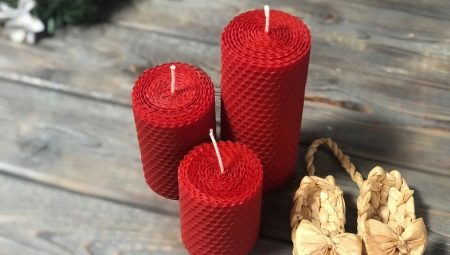
Nowadays, candles are no longer as popular as they used to be. But many still buy them in order to create a certain atmosphere, add a missing decor element, or simply dilute the design.
There are a large number of candles of different brands, names and purposes on the market. So which ones to choose, which ones are safe and which ones are not? In this article, we'll look at the main differences between wax and paraffin candles, how to distinguish between them, and how to choose.
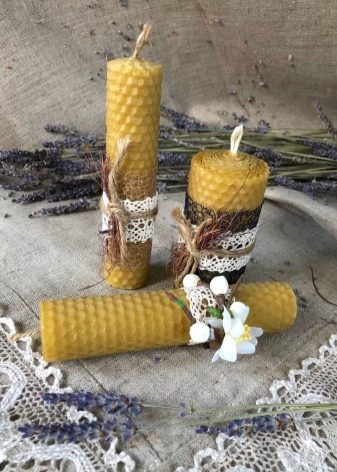
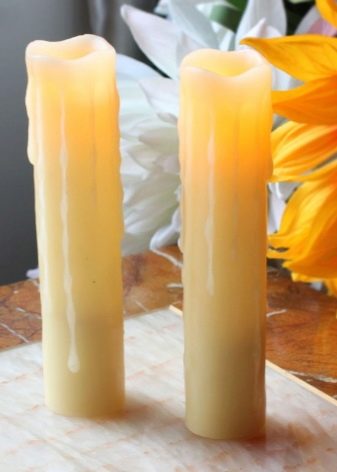
Comparison of composition
Before you understand what exactly the properties of candles differ, you need to look into their composition. After all, this is where the most basic information lies, as well as the main difference.
As the name suggests, wax candles are made from wax. This product is obtained from honeycomb cells that bees create. It is also called beeswax, because bees are directly responsible for the production of the product, there are special glands in their bodies.
Wax is not considered a cheap pleasure, because only a certain number of bees, or rather young individuals no more than two weeks old, can produce it.
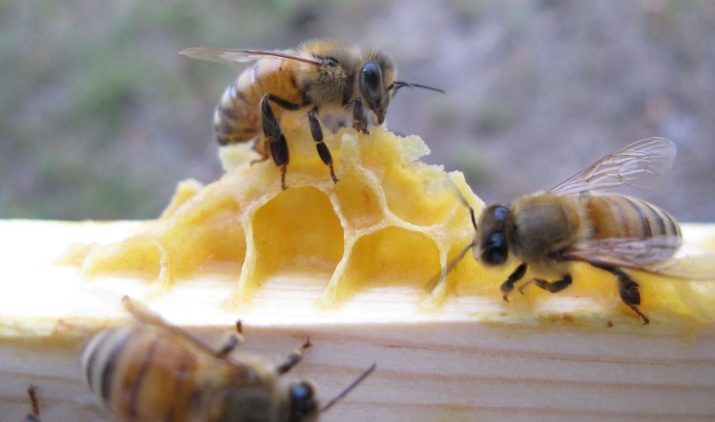
It turns out that the wax candle is a completely natural product. Of course, other ingredients for flavoring are also added to the candle, for example, propolis, some natural fragrances. In short, the composition should contain only natural products that do not cause allergies or any side effects.
Paraffin candles. Their composition is not at all as environmentally friendly as that of the previous product, because the paraffin material is extracted from oil, with an admixture of carbohydrates.That is, it is a completely synthetic substance, in which there is nothing natural. Yes, such candles are more affordable and cheaper. They also add various fragrances, fragrances, but also chemical elements that replace wax in the composition.

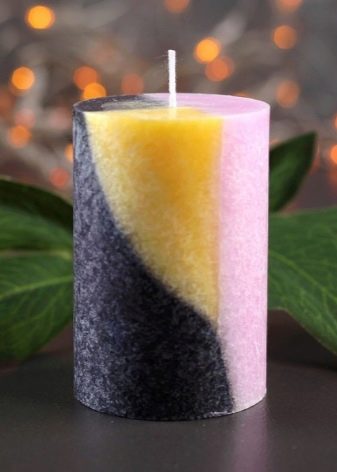
If with wax candles it is clear that they are made from natural ingredients and are completely safe, then why are paraffin ones dangerous?
As noted earlier, paraffin is a synthetic product extracted from oil. When burning, such candles emit toxic substances into the air, or, to be more precise, a combination of toluene and benzene. Benzene is used industrially to make rubber, plastics, paints, and some medical products. But toluene is an aromatic hydrocarbon compound with a sweetish odor. If you inhale it often, then weakness, headache may appear.
Toluene is also a component of benzene.
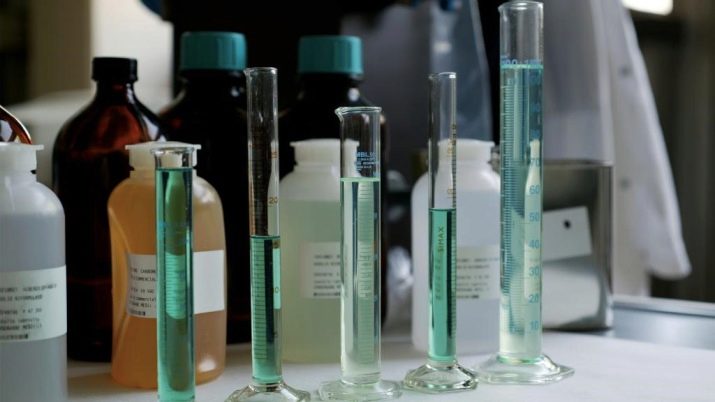
Therefore, it is not safe to use such candles on an ongoing basis.
How to distinguish candles by smell and visually?
Having figured out exactly how the candles differ in composition, it remains to understand how to determine from what wax they were made.
- The first difference inherent in paraffin is its cheapness. It is not so difficult to extract oil in the modern world, therefore, products made from this material, or rather, from its waste, are not so expensive. Wax candles, unlike paraffin wax candles, will cost much more, especially those that are made either by hand, that is, home production, or in a small enterprise.
- You can also determine by smell. Natural ingredients have a pronounced natural smell. Especially if eco-components (honey, propolis, wormwood) were used in the perfume. Paraffin itself does not have a pronounced smell, therefore, most often they use aromatic fragrances, which sound too intrusive when burning.
- You can distinguish by touch. Beeswax has a soft, pleasant structure, roughness and flexibility appear in places. But paraffin products are smooth, oily, somewhat reminiscent of soap.
- It is also worth noting that the wax candle will not bend without preheating, because the wax is very hard.
- Candles made from different materials burn differently. The wax melts gradually, without forming large smudges, does not spread to the sides. Paraffin melts quickly, caustically, and flows down the candle. If the candle is large, then it often burns out around the wick, leaving black smudges or carbon deposits.
- It can also be noted that when cutting, the paraffin will crumble, and it will not be possible to cut a uniform piece. Wax lends itself well to a knife.


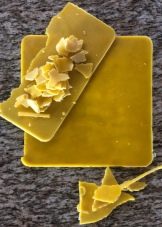
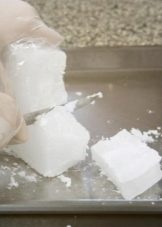
It may be difficult to distinguish the candles visually, but it is worth remembering that the paraffin at the exit turns out to be white or translucent. It is painted in a variety of colors, since the color palette is not limited by anything. But the wax will always be yellow, it may be slightly darker or lighter. It can also be dyed, but this process is very laborious.
And also natural wax becomes covered with a white bloom over time, which can be easily erased with a hand or a cloth. The paraffin remains unchanged.
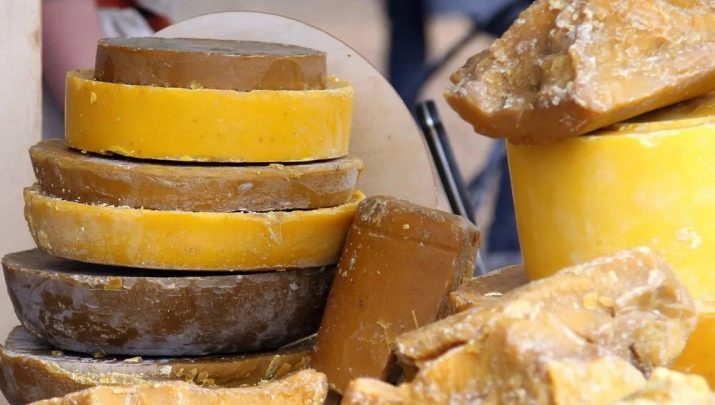
There are also such products on the market that are created from a combination of materials. That is, both wax and paraffin are present. Here, of course, it will be very difficult to find out what percentage of the components were actually involved. Therefore, it is still worth choosing natural formulations without impurities.
Which ones burn longer?
By their consistency, paraffin candles melt faster, smoke, and leave nothing behind at the exit.
How long the candle will burn depends on many factors. For example, size - the longer and thinner the candle, the longer it will burn. Thick items do not guarantee long burning time, especially when it comes to paraffin wax.

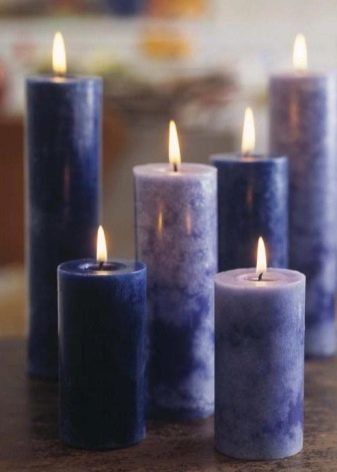
It will burn around the wick, but the edges will not have time to warm up and melt. Therefore, a crater will form around the wick, and subsequently the wick will burn out, and the candle itself, or rather, its edges will remain.
What can not be said about wax products. They burn evenly and burn out completely. If they are large, then the wax edges have time to warm up and also begin to melt.

If we compare the burning time of a candle of the same size - 15 cm long and 5 cm in diameter, then the paraffin will burn out in 3 hours, and the wax will burn for more than 5 hours.
Which one is better to choose?
Of course, the choice largely depends on preferences, but it is still better to choose natural ingredients. Since they are safe for health and will last much longer than paraffin products.
Wax is not only beeswax, for example, there are other plant components:
- coconut;
- soy;
- apricot.
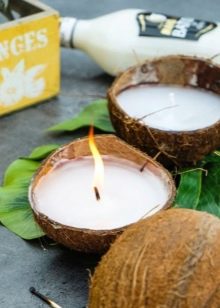
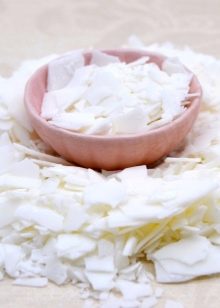
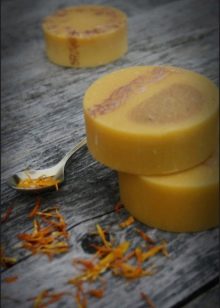
Coconut and apricot wax is very soft and begins to melt at room temperature. Therefore, it is also easy to check them in the store - the wax will start to melt in your hands. Soy is a denser material, it holds firmness better than coconut. In America, such soybeans are either grown or extracted from beans.
It is always worth reading the composition before buying, and it is best to try to hold the candle in your hands, so you can roughly determine whether the product was made from natural wax or not.









